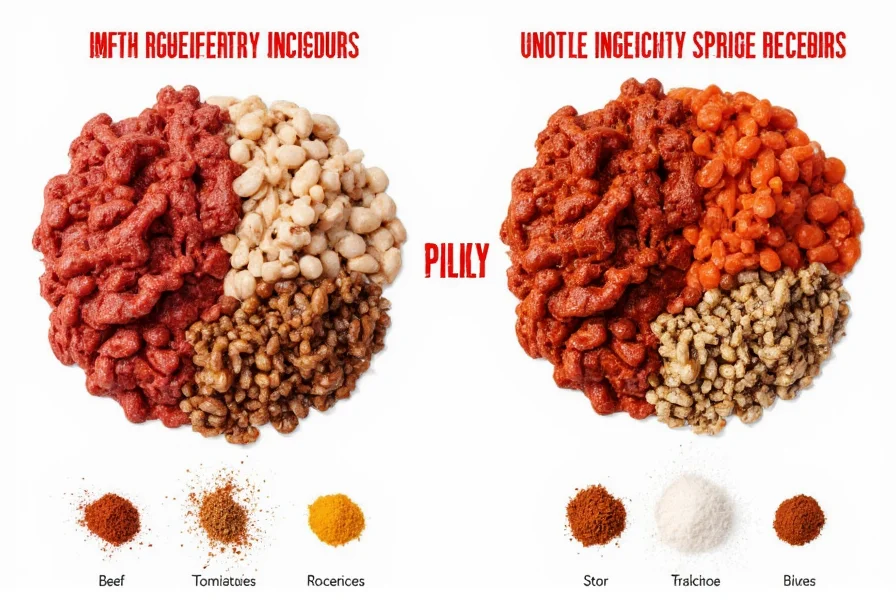Wendy's chili stands as one of the fast food chain's most enduring menu items, maintaining popularity for decades through consistent quality and strategic menu positioning. This beef-based chili offers customers a satisfying option that balances affordability with nutritional value, fitting seamlessly into Wendy's "fresh, never frozen" brand promise.
The History and Evolution of Wendy's Chili
Introduced in the early 1970s shortly after Dave Thomas founded the first Wendy's restaurant, the chili was designed as an affordable, hearty option that could be served year-round. Unlike many fast food items that come and go, Wendy's chili has remained remarkably consistent in its core recipe while adapting to modern consumer preferences.
During the 1980s, Wendy's expanded chili availability by introducing the bread bowl option, creating a distinctive serving method that differentiated it from competitors. The bread bowl became particularly popular during colder months, transforming the chili from a side item into a complete meal.
Nutritional Profile and Ingredients Analysis
Understanding what goes into Wendy's chili helps customers make informed choices. Each serving contains:
| Nutrient | Regular Size | Large Size |
|---|---|---|
| Calories | 210 | 330 |
| Total Fat | 9g | 14g |
| Protein | 14g | 22g |
| Fiber | 6g | 9g |
| Sodium | 990mg | 1560mg |
The ingredient list reveals Wendy's commitment to recognizable components: 100% pure beef, water, cooked pinto beans, diced tomatoes, onions, chili seasoning (chili pepper, spices, garlic powder, salt, silicon dioxide [anti-caking agent]), and modified corn starch. Notably absent are artificial flavors or preservatives that appear in some competitors' formulations.

How Wendy's Chili Compares to Competitors
When evaluating fast food chili options, several factors distinguish Wendy's offering:
- Meat quality - Wendy's uses 100% pure beef without fillers, unlike some competitors who incorporate textured vegetable protein
- Texture - The chili maintains a hearty, chunky consistency with visible beef pieces rather than a thin, watery texture
- Serving options - The bread bowl presentation creates a distinctive eating experience not widely replicated
- Price point - Positioned as a value menu item, typically costing less than $2 for a regular serving
While Taco Bell's chili focuses on a spicier, bean-heavy profile and McDonald's offers a simpler meat-based option, Wendy's strikes a balance between traditional chili elements and fast food practicality.
Customer Reception and Seasonal Patterns
Wendy's chili demonstrates remarkable seasonal consistency in sales, with modest increases during colder months but remaining a year-round performer. Customer reviews consistently highlight the chili's hearty texture and satisfying flavor profile as key strengths.
Market research indicates that chili serves as both a standalone menu item and a strategic complement to Wendy's core hamburger offerings, appealing to customers seeking something different from standard fast food fare. The bread bowl option particularly resonates with customers looking for a complete, handheld meal experience.

Creating Similar Flavors at Home
Many customers seek to recreate Wendy's chili flavor profile at home. While the exact spice blend remains proprietary, food scientists note that the distinctive taste likely comes from a combination of:
- High-quality ground beef browned to develop flavor
- A balanced ratio of meat to beans (approximately 60:40)
- Tomato acidity that cuts through the richness
- Spice blend featuring chili powder, cumin, garlic, and subtle heat
Home cooks aiming to replicate Wendy's chili should focus on building layers of flavor through proper browning of meat and slow simmering rather than relying on excessive seasoning. The texture—thick but not pasty—proves crucial to capturing the authentic experience.
Frequently Asked Questions
Does Wendy's chili contain pork or other meats besides beef?
No, Wendy's chili contains only 100% pure beef as the meat ingredient. It does not contain pork, chicken, or any other meats, making it suitable for those avoiding pork for dietary or religious reasons.
Is Wendy's chili gluten-free?
The chili itself is gluten-free, but it's prepared in facilities where cross-contamination with gluten is possible. The bread bowl option obviously contains gluten. Customers with severe gluten sensitivity should inquire about preparation practices at their specific location.
How does Wendy's keep their chili affordable while maintaining quality?
Wendy's achieves this balance through efficient supply chain management, standardized preparation processes, and strategic menu positioning. The chili uses relatively inexpensive ingredients that deliver high perceived value, allowing it to remain a value menu staple while maintaining ingredient quality standards.
Has the Wendy's chili recipe changed significantly over the years?
While minor adjustments have occurred to meet evolving food safety standards and ingredient availability, Wendy's has maintained remarkable consistency with their chili recipe since its introduction. The core components—100% beef, beans, tomatoes, and signature spices—have remained unchanged, contributing to its nostalgic appeal.
Can I order Wendy's chili year-round?
Yes, Wendy's chili is available year-round at most locations. While it sees increased popularity during colder months, it remains a permanent menu item unlike some seasonal offerings that rotate on and off the menu.











 浙公网安备
33010002000092号
浙公网安备
33010002000092号 浙B2-20120091-4
浙B2-20120091-4